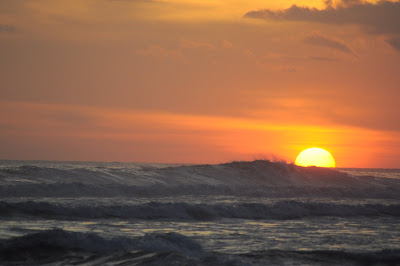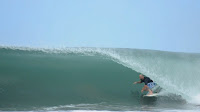The Fourfold Path to Healing: Working with the Laws of Nutrition, Therapeutics, Movement, and Meditation in the Art of Medicine. Authored by Thomas S. Cowan, MD with Sally Fallon and Jaimen Mcmillan.
“So Sweet was ne’er so fatal.” Shakespeare’s
Othello Diabetes is so common in America and other western countries that its presence in any human group has become a marker for civilization. Ironically, in no other field of western medicine has the promise of scientific breakthrough failed so poignantly as in that of diabetes.
Diabetes is characterized by abnormally high levels of sugar or glucose in the blood, which spills into the urine, causing it to be sweet. The disease was first described by the Greeks who called it diabetes mellitus or “honey passing through.” Today there are at least 20 million diabetics in America, six million of whom must take shots of insulin daily. Scientists hailed the discovery of insulin in the 1920s as one of medicine’s greatest achievements—as, in fact, it was. Insulin is a pancreatic hormone needed for the transfer of glucose from the blood to the cells. When this system fails—when the pancreas does not produce enough insulin or the insulin cannot get the glucose into the cells—then the sugar level in the blood remains abnormally high. This is the disease we call diabetes.
Originally, doctors thought that diabetes was simply a disease of insulin deficiency, a disease in which pancreas was unable to produce enough insulin to meet the body’s demands, and that it could be successfully managed once the right knowledge and technology were in place. Over time, researchers have produced better delivery systems for insulin, and ways to produce more purified and effective types of insulin—from porcine insulin to human insulin produced through genetic engineering. The medical profession has learned that giving insulin orally was unsuccessful, that subcutaneous injections were better, and that delivering it through a pump was best. Yet with all the improvements that have been made since 1920, diabetes remains one of the leading causes of death and disability in the western world. Complications of diabetes include heart disease and circulation problems, kidney disease, degeneration of the retina leading to blindness, neuropathy resulting in numbness, tingling, pain and burning in the extremities, foot ulcers to gangrene and high risk of infection.
Today, doctors realize that diabetes is a much more complicated condition than one of the simple insulin deficiency. They have also discovered that there are two types of diabetes. Type I diabetes, which is called insulin-dependent or childhood diabetes, usually develops before age of 30, and involves a malfunction of the pancreas. Type I diabetes is thought of as an autoimmune disease in which some trigger causes the body’s immune system to attack its own insulin-producing cells (called the islets of Langerhans) in the pancreas. In time, the pancreas loses its ability to produce insulin, blood sugar rises, and serious adverse consequences, including death, can occur if the person is not supplied with insulin. As yet, there is no consensus as to what the autoimmune trigger for Type I diabetes might be. Some evidence points to the early feeding of pasteurized cow’s milk, soy products and grains, or the use of vaccines, as likely triggers. Type I diabetes is often very difficult to control and, if not successfully controlled, can lead to the early onset of many of the complications listed above.
Type II diabetes, which is much more common than Type I diabetes, has a different etiology. It is the form of diabetes that is literally crying out for the new perspective from the one currently offered by the medical profession.
In order to understand the diabetes epidemic in the western world, and why the conventional treatment for this scourge has made almost no dent in its long-term impact on those who suffer from it, we must understand some basic biochemistry. The control of the blood sugar is one of the most fundamental requirements for a healthy life. Blood sugar levels can become abnormal in one of two ways: they can become too low, which we define as a blood sugar less than 80 and call hypoglycemia; or they can become too high, defined as a blood sugar over 110, which is called hyperglycemia. While neither hypoglycemia, nor hyperglycemia is good for your health, they appear to call forth very different reactions in the human being. For example, if your blood sugar drops below 40, you will become disoriented, confused, and if the situation persists, slip into a coma and die. This situation is a true medical emergency. When blood sugar is between 40-60, you feel shaky, jittery, anxious, sweaty, confused and irritable. When blood sugar is between 60-80 these same symptoms occur, but they are less severe.
The body reacts to the emergency situation of low blood sugar in the many ways. When blood sugar even begins to drop below 80, the body produces a number of hormones, principally adrenaline and glucagon. The main effect of adrenaline is to make more sugar available to the cells. It is the production of adrenaline that accounts for the familiar shaky, jittery feeling that many have experienced during these hypoglycemic episodes. Glucagon helps raise blood sugar levels by increasing fat breakdown and stimulates the conversion of fat into sugar.
There may be as many as 10 or more hormonal or biochemical reactions that occur during the early stages of hypoglycemia. One is the release of growth hormone, which has also been found to increase blood sugar in times of stress. As you can see, the body is well prepared to ward off this potential emergency. It has multiple overlapping mechanisms to prevent a precipitous fall in blood sugar, and many of these reactions produce clear symptoms that provoke us into action. Severe hypoglycemia is clearly a situation our adaptive physiology has learned to avoid.
The situation is much different in respect to hyperglycemia. Many times during my practice I have asked a new diabetic patient how they felt and heard them reply, “a little tired, but not bad.” Yet routine screening blood tests tell me that some of the unsuspecting patients have blood sugar levels as high as 400, almost 4 times the normal level. These people are at strong risk for all the major complications of diabetes including coronary artery disease and neurological disease, yet they feel nothing, their bodies give them little warning. Why is this?
Some have conjectured that the body has a hard time dealing with hyperglycemia because the conditions that cause it—namely overeating—are a relatively new phenomenon in human history. On the other hand, hypoglycemia induced by lack of food has been a frequent occurrence to which the body has adapted with a variety of mechanisms. Compared to dozens of hormones that are activated when our blood sugar drops too low, the body has only two mechanisms to deal blood sugar that goes too high. One is exercise—any muscular activity drives the sugar from the blood into the muscle cells where it is used as fuel. The second is the production of insulin. Insulin production is the body’s way of saying that the sugar level is too high, that the body is overfed with sugar. Insulin helps remove sugar from the blood into the cells stored as fat. (It is interesting to note that the type of fat that is made by the body under the guidance of insulin is saturated fat.)
Understanding this basic physiology leads to some interesting conclusions. One is that controlling the level of insulin produced is the key to controlling obesity. For without insulin there can be no weigh gain. People who lose the ability to make insulin (Type I diabetics) will never gain weight no matter how much food they eat unless they are supplemented with insulin. In fact, without insulin they literally starve to death.
The second conclusion we can draw is that the cause of Type II diabetes is actually quite simple. Type II diabetes occurs when for many years the consumption of foods that raise blood sugar chronically exceeds the amount of sugar needed by the muscles for exercise. This forces the body to gradually make more and more insulin in order to bring this sugar level down. Eventually, the body cannot make enough insulin to lower the sugar level, the sugar level remains chronically high and the patient is diagnosed with diabetes.
Along the way a curious thing happens called insulin resistance. This means that as the blood sugars are chronically elevated, and the insulin levels are rising, the cells build a shield or wall around themselves to slow down this influx of excess sugar. Insulin resistance is a protective or adaptive response, it is the best the body can do to protect the cells from too much glucose. But as time goes on the sugar in the blood increases, more insulin is made by the pancreas to with this elevated shutting the gates. This leads to the curious situation in which blood sugar levels are high but cellular sugar levels are low. The body perceives this as low blood sugar. The patient has low energy and feels hungry so he eats more, and the viscous cycle is under way.
Having a chronically elevated insulin level is detrimental for many other reasons. Not only do high insulin levels cause obesity (insulin tells our body to store fat), but they also signal that fluid should be retained, leading to edema and hypertension. Chronic high insulin provokes plaque development inside the arteries and also suppresses growth hormone needed for the regeneration of the tissues and many other physiological responses.
During the 1980s, researchers began to ask whether obesity, coronary artery disease, hypertension and other common medical problems that occur together are really separate diseases, or manifestations of one common physiological defect. The evidence now points to one defect and that is hyperinsulinemia, or excessive insulin levels in the blood. Hyperinsulinemia is the physiological event that links virtually all of our degenerative diseases. It is the biochemical corollary or marker of the events described in the previous chapter on heart disease.
The question we need to answer, the, is what causes hyperinsulinemia? In basic biochemistry we learn about the three basic food groups: fats, proteins, and carbohydrates. Under normal circumstances it is the carbohydrates that are transformed into the sugar that goes into the blood. Fats are broken down into fatty acids and become the building blocks for hormones, prostaglandins and cell membranes. Proteins are broken down into amino acids which then are rebuilt into the various proteins in our bodies. Carbohydrates are used for one thing only and that is energy generation. This allows us to define a “balanced” diet, which is one where the energy used in movement and exercise equals the energy provided by the carbohydrates we consume.
For a person of a given size, protein and fat requirements are relatively fixed and can be controlled with appetite. (It is actually difficult to overeat fats and protein, as our bodies make us nauseous when we do.) However, carbohydrate intake should be intimately related to our level of activity. If we run a marathon every day, a balanced diet would probably include about 300 grams of carbohydrates per day. If we sit on the couch all day, obviously our requirement for energy food will be less. In this case a balanced diet would include about 65-70 grams of carbohydrates per day. Any more, and our bodies are forced to make more insulin and the whole vicious cycle begins.
The problem with diabetes can be summarized by saying that the western diet has us eating like marathon runners, when in fact most of us simply sit on the couch. When we regulate the carbohydrate intake to match our exercise level, Type II diabetes cannot develop...’









































